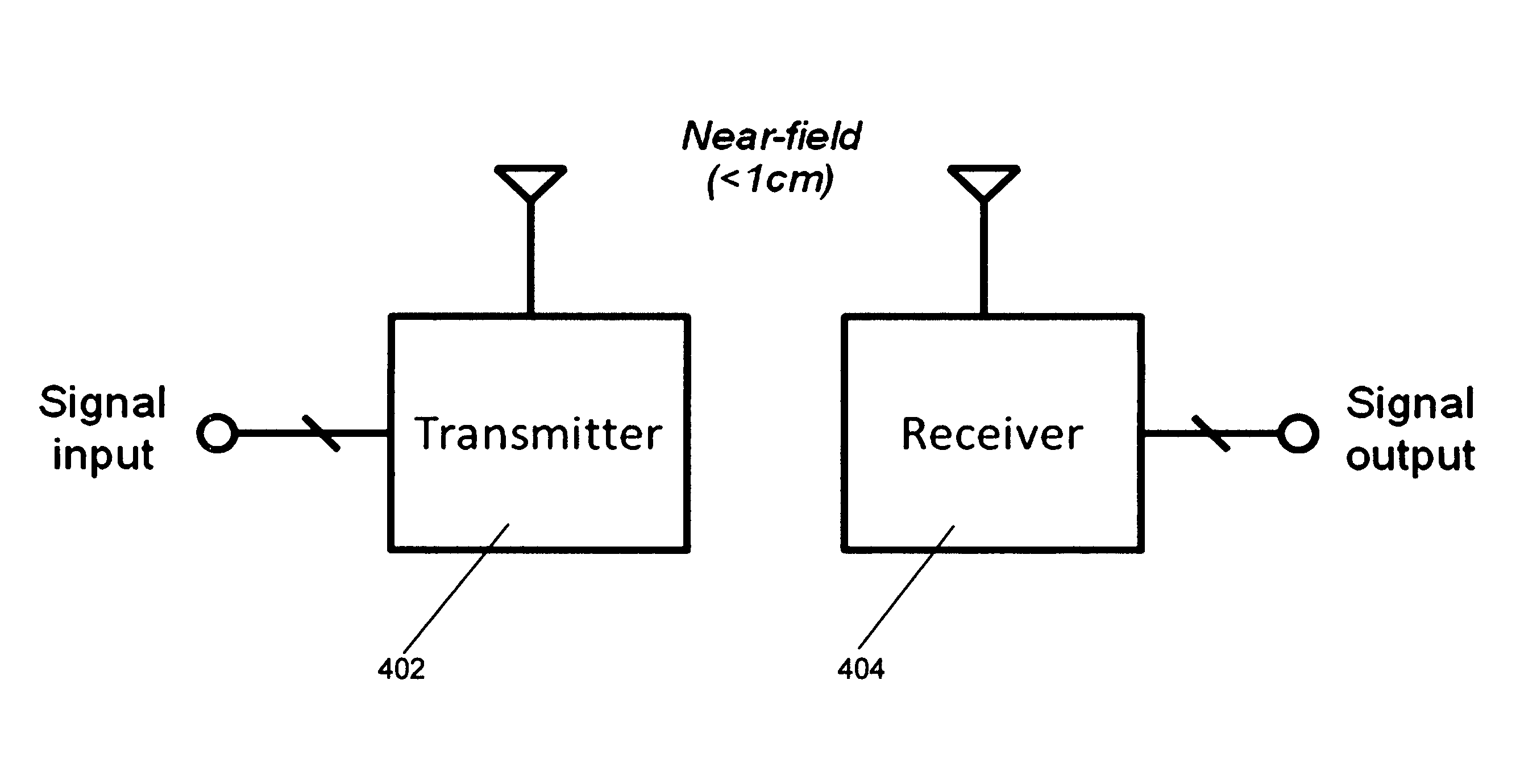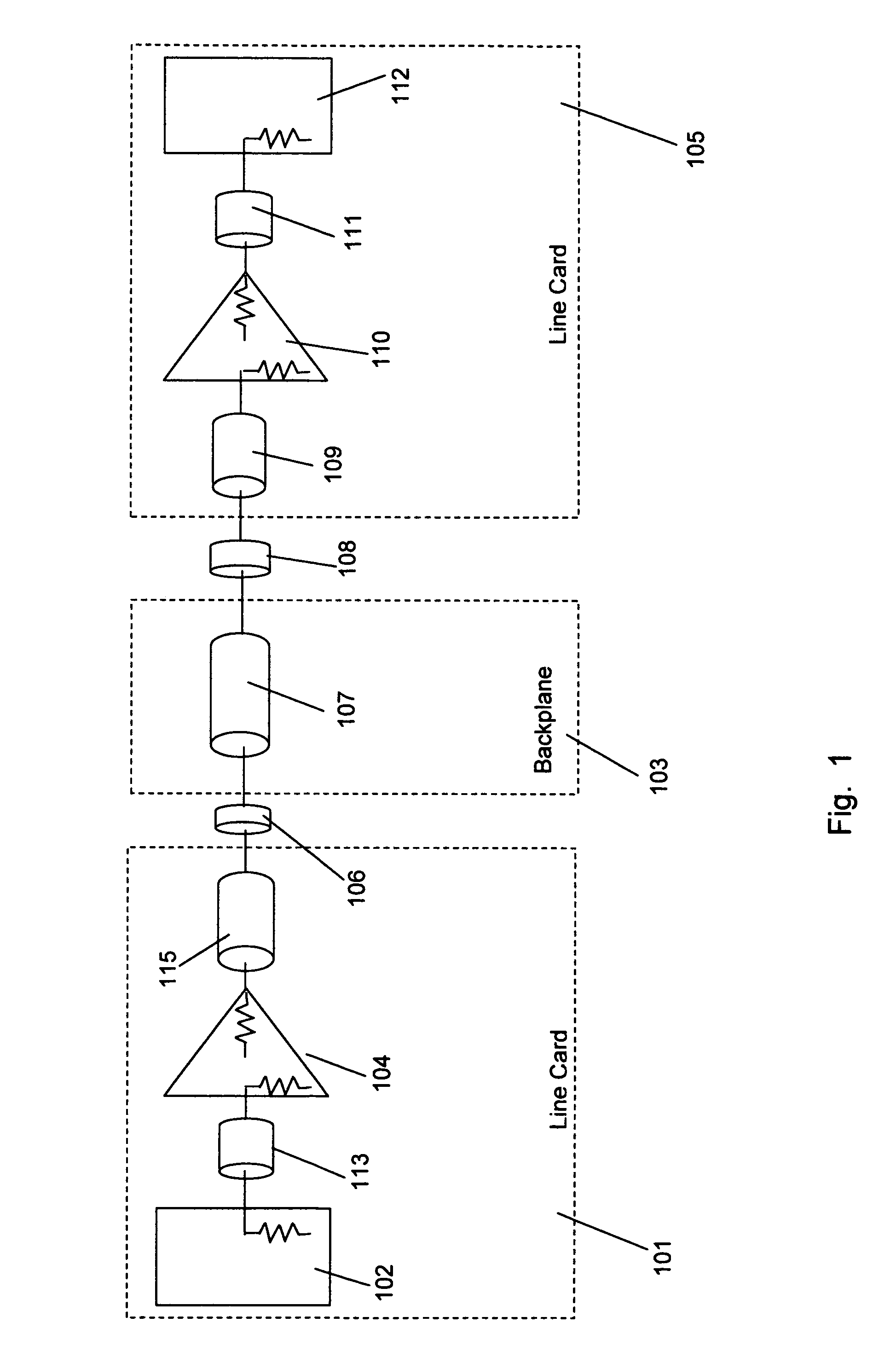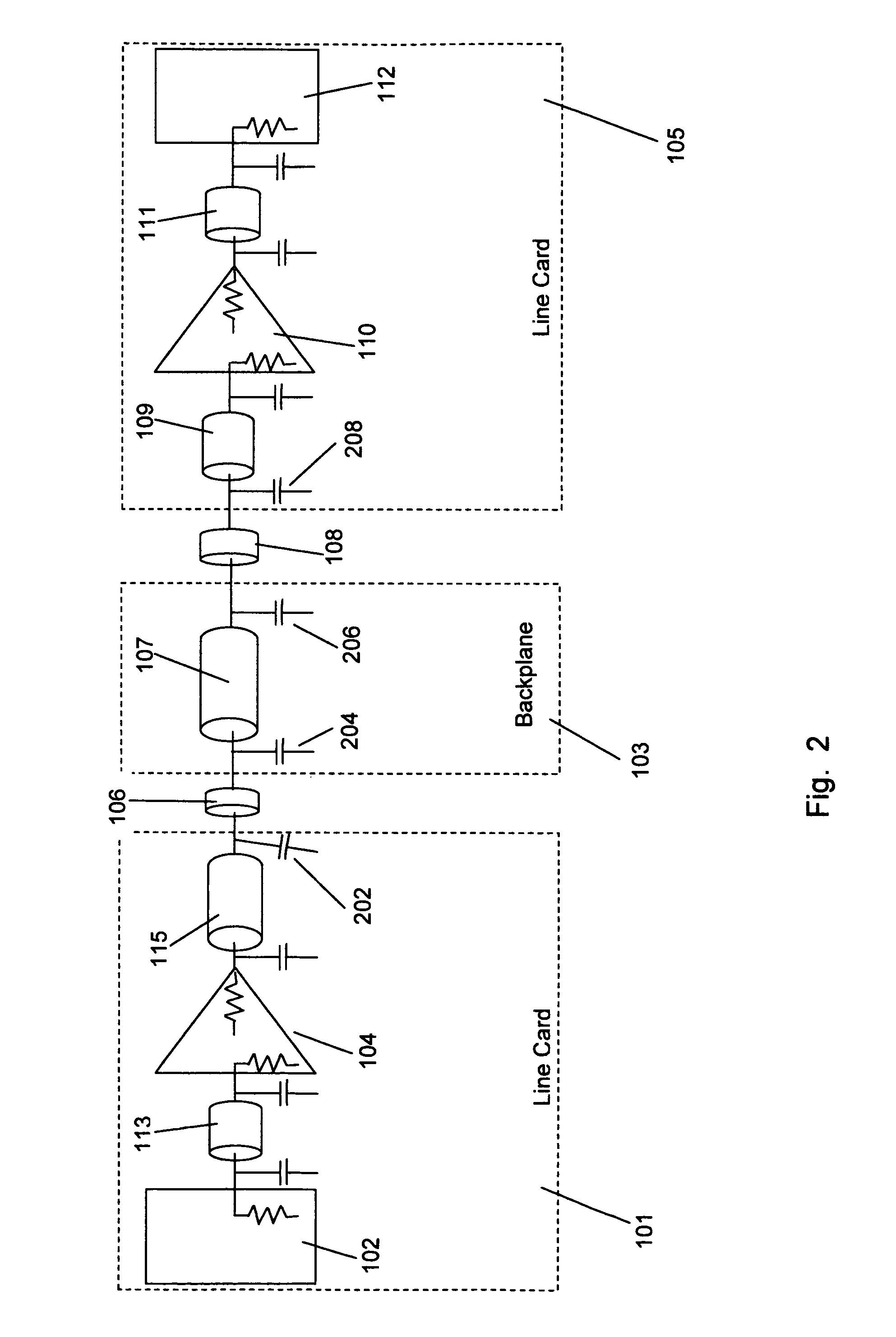Tightly-coupled near-field communication-link connector-replacement chips
a near-field communication and connector technology, applied in the direction of electric signalling details, near-field systems using receivers, instruments, etc., can solve the problems of complex discontinuity, signal integrity degradation, and expensive electronics to negotia
- Summary
- Abstract
- Description
- Claims
- Application Information
AI Technical Summary
Benefits of technology
Problems solved by technology
Method used
Image
Examples
Embodiment Construction
[0024]Generally, embodiments of the present invention provide methods and apparatus for transferring data through a physically discontiguous signal conduction path without the physical size and signal degradation introduced by a signal-carrying mechanical connector, and without the associated costs and power consumption of equalization circuits. Various embodiments of the present invention provide data transfer between physically discontiguous portions of a signal conduction path by means of near-field coupling apparatus which have tightly-linked transmitter and receiver pairs. These transmitters and receivers are typically implemented as integrated circuits. Antennas for these may be internal or external with respect to the integrated circuits.
[0025]In some embodiments of the present invention, the transmitter / receiver pair includes a first chip with a transmitter and a second chip with a receiver; while in other embodiments the transmitter / receiver pair includes a first chip with ...
PUM
 Login to View More
Login to View More Abstract
Description
Claims
Application Information
 Login to View More
Login to View More - R&D
- Intellectual Property
- Life Sciences
- Materials
- Tech Scout
- Unparalleled Data Quality
- Higher Quality Content
- 60% Fewer Hallucinations
Browse by: Latest US Patents, China's latest patents, Technical Efficacy Thesaurus, Application Domain, Technology Topic, Popular Technical Reports.
© 2025 PatSnap. All rights reserved.Legal|Privacy policy|Modern Slavery Act Transparency Statement|Sitemap|About US| Contact US: help@patsnap.com



